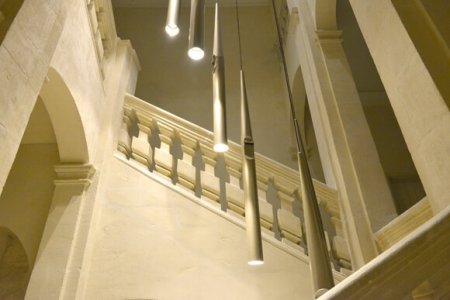Depending on what appeals more when s/he first recognises the clearly identifiable sound-producing elements that have now become luminaires. And that is where the reasons behind the design and development of this unique solution come into play: Saint-Rémy-de-Provence is a small town in the south of France that looks back on a remark- able history. This is where Nostradamus was born, for example, and where Vincent van Gogh used to like to paint. Like the town, the building itself is also steeped in history.
The renovated residence, which dates back to the 17th century and was formerly a seat of nobility, is today a unique hotel. In 1863, Charles Gounod’s opera "Mireille" was performed for the first time within its walls, with the composer himself sat at the harmonium, or reed organ as it is sometimes known. And it was this fact that provided a source of inspiration for lighting designer Susanne Brenninkmeijer. The lighting solution she has designed comprises five organ pipes suspended at different heights and sourced with warm white LED reflector lamps focussed down into the space. The inside of the pipes is painted gold. In combination, this provides pleasant, warm light in the baroque stairwell. In addition, narrow-beam directional spotlights have been mounted in the ceiling. These illuminate the organ pipes from above and fill the rest of the entrance area with soft light that brings out the quality of the sandstone. Lighting technology cleverly built into a resonating body: a case of light for the ears. And although the organ pipes are now silent, they have been reborn as aesthetically pleasing luminaires that are true music for the eyes.
Architecture: Margot Stängle
Lighting design: L+RC, Susanne Brenninkmeijer
Product: Orgelbau Oppel
